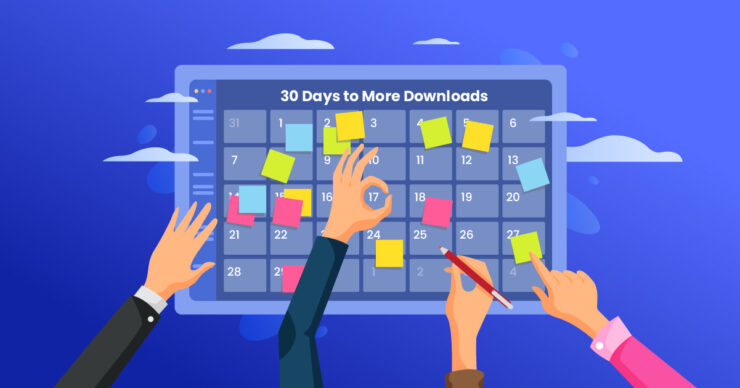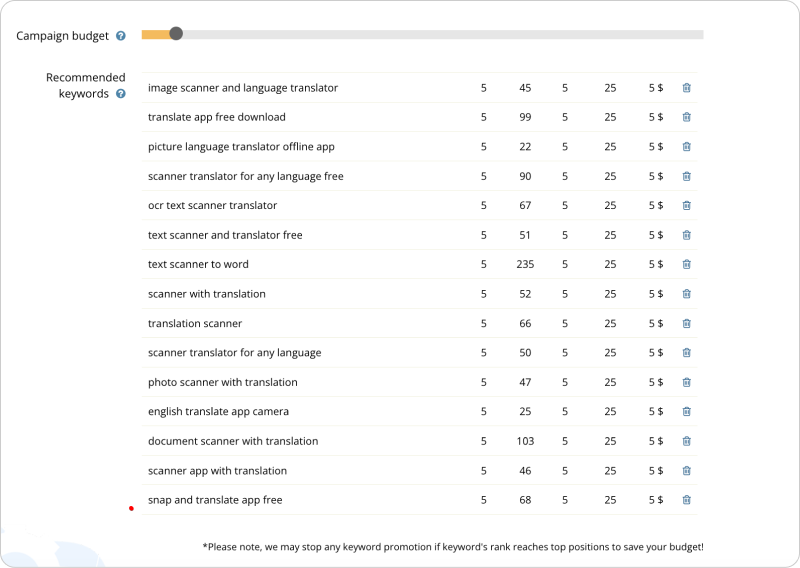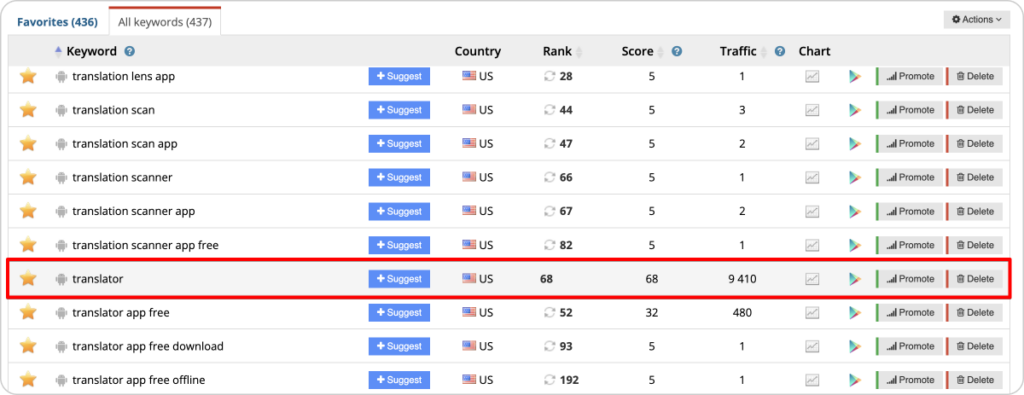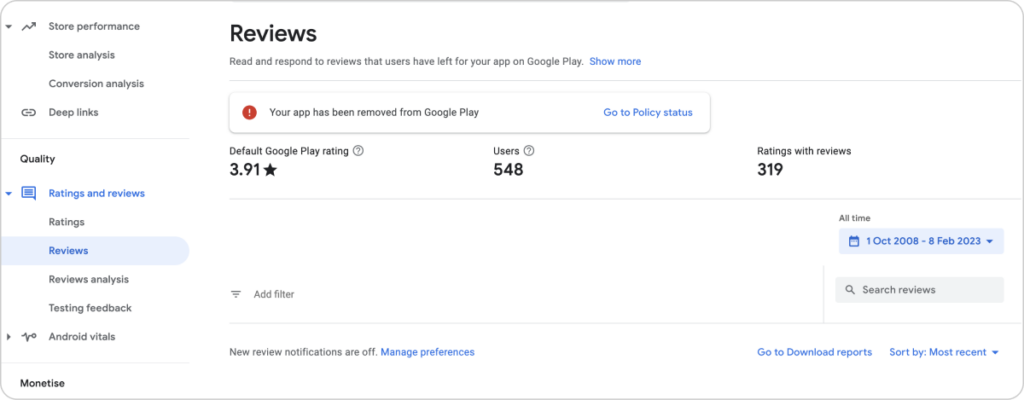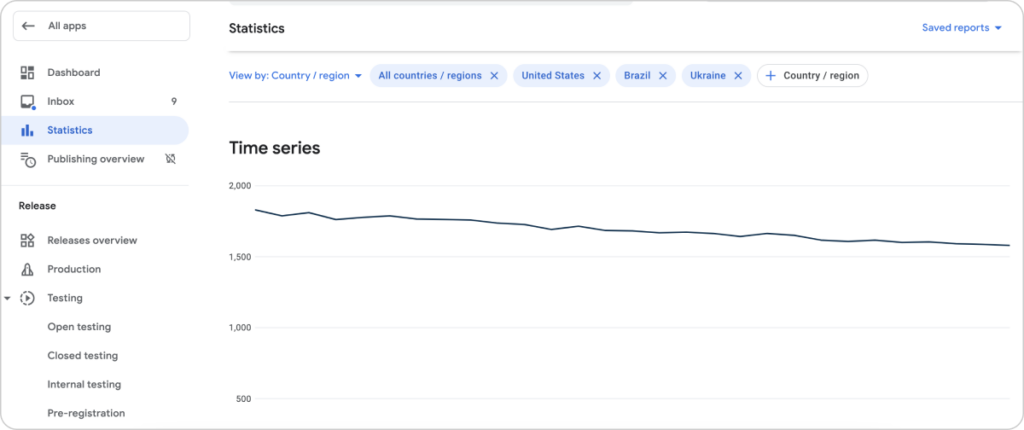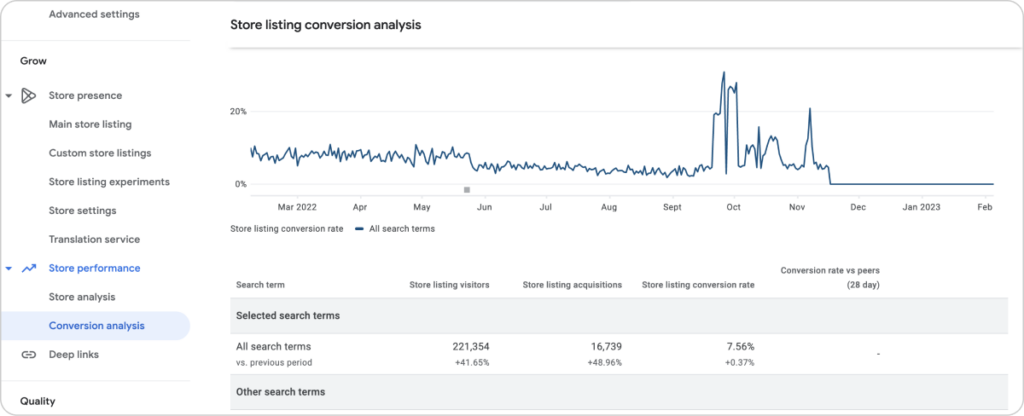Find the common plan for your Android app promotion, with the main steps to follow at each of the stages. This plan should help both app developers and app marketers create strategies for ASO and app marketing before and after the app’s release.
- 30 Days to Success Step by Step
- Day 1-7: Preparation to release and first steps after
- Day 8-14: First steps in promotion
- Day 15-21: First results after keyword promotion and app reputation management
- Day 22-30: Continuous Improvement
30 Days to Success Step by Step
As an app developer, you have likely spent countless hours designing and building your app. However, simply releasing your app on the Google Play Store is not enough to guarantee success and an increase in the number of organic installs. In order to gain traction and reach a wider audience, you need to promote your app effectively and follow the promotion strategy created before the app’s release. This can seem overwhelming, but by following a 30-day plan, you can take a structured approach to your app promotion and increase the app’s chances of success.
We know that sometimes it is difficult to gather all the needed details for app promotion together as well as to structure this process to have a ready list of actions. Of course, it is important to remember that each app promotion process is different and depends on many factors, such as niche, category, current trends, etc. But we tried to create a 30-day plan for Android app promotion to make these first steps easier for you.
Day 1-7: Preparation to release and first steps after
As you may be aware, we always recommend beginning the app store optimization process during the app development stage in order to proceed with both of these processes concurrently. By the way, read how to create an ASO for your app.
The first 7 days of your promotion plan should be focused on preparing your app for release. This includes finalizing your app description, screenshots, and icon, uploading the app to the Google Play Store, as well as sharing the app on your personal social media platforms or on your website, if you have one. Additionally, you can start an email marketing campaign to reach potential users. Make sure your email includes information about your app, why it is unique, and a link to download it from the Google Play Store.
Within this period of time, it is also needed to work with keywords, as we remember that the main aim of ASO is the indexation of search requests alongside with increase in conversion rates. To be able to check quickly for which keywords the application is indexed after the release, use the Keyapp ASO tool “My Keywords”. Add all the search requests from your keyword research there to follow all the changes in ranks and catch the moment when the app gets into the index to be able to start the keyword promotion.
At this stage, it is also important to focus on the keywords that are the most relevant for your app promotion. Do not forget that Google Play has a long indexation process, and sometimes it may take even 1-2 weeks for the app to get into the index for keywords after ASO is done, as well as the app not getting into the index for high-frequency keywords at once. After the release, the app may be in the top 250 for the requested lower popularity, but that doesn’t mean that keyword promotion shouldn’t be conducted at all.
Day 8-14: First steps in promotion
After ASO is done, the app is released, and you are ready to follow all the changes with app ranks for keywords, it is high time to move to the first steps in the promotion. As we have discussed in the previous point, it is necessary to be ready to follow the indexation for keywords so as to add all the requests to the tool that can help with this.
Within these days, you need to follow precisely for which search requests the application gets into the top 250 to be able to start the promotion. As you may see from the example, we worked with the translation app after the release, and at the first steps, the app got into the index for the relevant keywords, but their popularity score was mostly low. Our main aim was to get into the index (and promote in the future) the keyword “translator”. As you may have guessed, this keyword is very popular, so we decided to start the promotion for the requests with the same core elements. The promotion of such requests may help the application index for the main keywords, as the Google algorithm sees the connection if the app starts to rank higher for the related keyword.
By the way, do not forget that, with the aim of checking for which keywords your application is ranked in a particular country, you can use our tool “Smart Campaign,” which shows all the search requests the application is found for in the top 250, so you can pick them for promotion campaigns.
We checked the ranks, grouped the keywords, and proceeded with the promotion for the next requests: “all language translator “offline”, “translator free offline”, “ocr text scanner translator”, “foreign language translator”, “language translator app offline”. For all of these keywords the app has 50+ positions as well as the score is 5, so it will be completely enough to set from 5 to 20 installs daily with an everyday increase, like day 1 – 5, day 2- 10 etc. Do not forget, that for Google, it is better to set the campaigns of 5-7 days in length.
With this campaign, we were trying to get the keywords higher in positions as well as to show Google that the app is becoming popular so as to be indexed for other keywords with the same core element, “translator.” Pay attention, that we haven’t used high daily volumes for low-competitive keywords.
As the app is not indexed for many keywords yet, we decided to proceed with an ad campaign as well, as Google Ads, for example, may help the app get into the index for the keywords as well. By the way, with this aim, you can also use CPI campaigns on our platform. While attracting users from countries with low CPI, the application may start to index for the keywords in tier 1 countries as well, as Google will see that it gets users as well as in-app activity that impacts the indexation process.
Day 15-21: First results after keyword promotion and app reputation management
2 weeks after the release and the first promotion campaigns for keywords and with any ad network, it is high time to analyze the results received.
First of all, analyze the keywords you promoted in the first campaign, the received ranks, as well as the new keywords for which the app could appear in the index. In our case, we aimed to be indexed for the keyword “translator,” which was basically achieved, as you can see from the screenshot below.
In the same way, you should analyze the changes in ranks and define if the app gets the rankings for the main desired keywords. In our case, while the app is indexed, we proceeded with the new keyword campaign but already added both the low-competitive keywords and our main request. For Google, it is important to do so, as from our experience, it is possible to say that if core keywords are promoted together, the positions are achieved faster. So the next campaign we looked at the following
As you may see, we used the higher daily volume for the main keyword “translator” and a lower amount for the long-tailed request as their promotion is aimed to support “translator.”
In addition, it is already possible to begin working with app reviews. Because the application was only released two weeks ago, it is very likely that it has no or only a few reviews. That’s why it’s important to start adding the reviews slowly. For the first campaign, it will be enough to set only 1-2 high-quality reviews to get the first feedback.
If the app already has some reviews/ratings, go to the Google Developer Console and analyze them. App reputation will give you an understanding of what users are satisfied with in the app and what can be improved on your side.
Besides this, it is already high time to analyze the results of the increase of app downloads in the Google Play developer console. For this, you can go to the statistics section. This report will help to determine how many installs the app receives as well as analyze the main countries the application gets downloads from.
One more section to analyze is the conversion analysis. These graphics will help you understand how your ASO works, as they point to the conversion rate of the app listing. Besides, while the app is already indexed for the keywords, this report will help to get for which requests the application gets the downloads. Pay attention, that not all the search requests are mentioned in this section; only the most popular ones for your application are added.
Day 22-30: Continuous Improvement
During the final week of this promotion plan, you should try to continue working with the app with the goal of increasing app downloads from search and browsing, as well as conducting the ASO sum-up analysis.
With this goal in mind, analyze previous keyword campaigns, check the achieved ranks, and try to group the keywords as follows:
- Keywords for which the ranks achieved top 20
- Keywords for which the ranks are top 20- top 100
- Keywords for which the positions are lower than 100
The next grouping of keywords should look like this:
- Keywords of the first importance (usually these are the most relevant keywords of high popularity for which you would like to get top ranks)
- Long-tailed keywords of middle- and low-competitiveness (usually you can use these keywords in the promotion campaigns with the aim to help the most important requests to increase the positions higher, you can add for them 5-10 keyword installs).
Paying attention to the groups of keywords created, you will be able to:
- Estimate the achieved ranks
- Choose the keywords for the next promotion campaigns
- Get the keyword popularity score to pick the most popular and add there more keyword installs.
The next step this week will be to begin permanent work with the app’s reputation. You can create a base of ready replies for feedback. Do not forget that it is needed to answer all the reviews the application gets, both positive and negative. By the way, read our article to find out how to work with app reviews.
To sum up, it is necessary to say that promotion of your Android app is a multi-faceted process that requires a structured approach. By following a 30-day plan, you can take a systematic approach to promote your app, build awareness, engage with users, and make continuous improvements to your app and marketing strategies. Remember to always be flexible and adjust your plan as needed, as the app market is constantly evolving. With time, effort, and a little creativity, you can reach a wider audience and achieve success with your app.
Our support team is always ready to help you with all the campaign settings, as we know the current trends in keyword promotion and the most efficient strategies that will help your app to achieve top positions in search!

